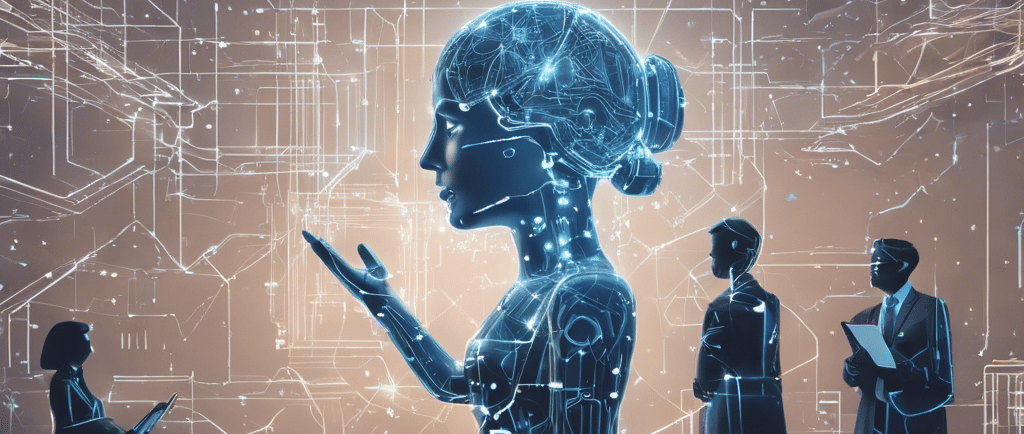Building an AI-Ready Workforce: Upskilling and Reskilling Employees for the Future
Discover the imperative of upskilling and reskilling employees for the AI-driven future of work. Explore strategies to cultivate an adaptable and innovative workforce, enhancing productivity, engagement, and retention. Elevate your knowledge on building an AI-ready team at https://rchoudhury.com/building-an-ai-ready-workforce-upskilling-and-reskilling-employees-for-the-future .
ARTIFICIAL INTELLIGENCE (AI)


The rapid evolution of technology, particularly Artificial Intelligence (AI), is reshaping industries and changing the workforce landscape. To stay competitive and relevant in this era of technological advancement, businesses must focus on building an AI-ready workforce. This involves upskilling and reskilling employees to equip them with the necessary skills and knowledge to thrive in a tech-driven environment. In this blog post, we'll explore the importance of upskilling and reskilling, the benefits it brings to both businesses and employees, and strategies for cultivating an AI-ready workforce.
The Changing Landscape of Work
The Fourth Industrial Revolution is marked by the convergence of digital, physical, and biological technologies. AI, automation, and robotics are reshaping job roles and tasks across industries. As routine tasks become automated, the demand for skills such as critical thinking, creativity, problem-solving, and adaptability is on the rise.
The Need for Upskilling and Reskilling
Upskilling and reskilling are essential strategies to bridge the skills gap and ensure that employees remain relevant in a technology-driven world. Let's differentiate between the two:
- Upskilling: Enhancing existing skills to keep pace with evolving technology. For example, a marketing professional is learning data analytics to understand customer behavior better.
- Reskilling: Acquiring new skills to transition into a different role or field. For instance, a manufacturing worker is learning programming to operate and maintain automated machines.
Benefits of an AI-Ready Workforce
1. Future-Proofing: An AI-ready workforce is adaptable and prepared for technological shifts, ensuring long-term employability.
2. Enhanced Productivity: Upskilled employees are more efficient and capable of handling complex tasks, leading to increased productivity.
3. Innovation: A diverse skill set fosters innovation as employees bring new perspectives and ideas to the table.
4. Employee Engagement: Investing in employees' growth demonstrates commitment, boosting morale and engagement.
5. Talent Retention: Employees appreciate growth opportunities, leading to higher retention rates.
Strategies for Building an AI-Ready Workforce
1. Skills Assessment: Identify existing skill gaps within the workforce to tailor upskilling and reskilling programs.
2. Targeted Training: Offer training programs that align with the skills required for emerging roles in your industry.
3. Continuous Learning Culture: Create an environment that promotes continuous learning and encourages employees to acquire new skills.
4. Collaboration and Knowledge Sharing: Encourage collaboration between employees with diverse skills to foster cross-functional learning.
5. Leverage Online Learning Platforms: Platforms like Coursera, Udemy, and LinkedIn Learning offer a wide range of courses for upskilling and reskilling.
6. Internal Mobility: Facilitate internal transfers that enable employees to explore new roles within the organization.
Real-Life Examples of Upskilling and Reskilling
1. IBM's SkillsBuild Program: IBM's program provides free online courses to help individuals gain new skills and secure employment opportunities in a changing job market.
2. Amazon's Career Choice: Amazon offers employees the opportunity to learn new skills for in-demand fields, even if those skills are not directly related to their current roles.
3. AT&T's Workforce 2020 Program: AT&T invested in upskilling its workforce to ensure they have the skills needed for roles involving emerging technologies.
Ethical Considerations and Employee Well-Being
While upskilling and reskilling are critical, organizations must consider the well-being of employees during this transition. Transparent communication, support systems, and a balance between learning and work responsibilities are crucial.
Conclusion
The future of work is undeniably intertwined with technology, and an AI-ready workforce is the key to unlocking its potential. As you navigate the dynamic world of Information Technology, remember that building an AI-ready workforce goes beyond technology; it's about investing in the growth and development of your most valuable asset—your employees. By equipping them with the skills to thrive in a tech-driven environment, you're future-proofing your business and fostering a culture of continuous learning and innovation.
Note: This blog post provides insights into building an AI-ready workforce through upskilling and reskilling. Stay tuned for future posts where we explore emerging trends and advancements in the world of Information Technology.